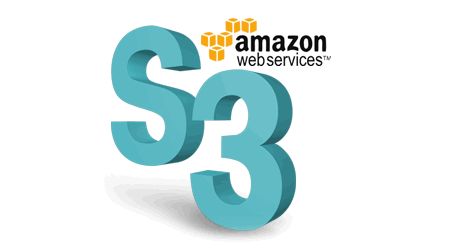CSC/ECE 517 Spring 2015/ch1a 7 SA

Amazon Simple Storage Service (Amazon S3) is a remote, scalable, secure, and cost efficient storage space service provided by Amazon. Users are able to access their storage on Amazon S3 from the web via REST [1] HTTP [2], or SOAP [3] making their data accessible from virtually anywhere in the world. Amazon S3 implements redundancy across multiple devices on multiple facilities in order to safeguard against application failure ,data loss and minimization of downtime [4]. Some of the most prominent users of Amazon S3 include: Netflix, SmugMug, Wetransfer, Pinterest, and NASDAQ [5].
Background
Amazon S3 launched in March of 2006 in the United States [6] and in Europe in November of 2007 [7]. Since its inception, Amazon S3 has reported tremendous growth. Beginning in July of 2006, S3 hosted 800 million objects [8]; April of 2007, 5 billion objects [9]; October of 2007, 10 billion[10]; Jan 2008, 14 billion [11]; October 2008, 29 billion [12]; March 2009, 52 billion [13]; August 2009, 64 billion [14]. In April of 2013, S3 now hosts more than 2 trillion objects and on average 1.1 million requests every second! [15].
Design
S3 is an example of an object storage and is not like a traditional hierarchical file system. S3 exposes a simple feature set to improve robustness and all data in S3 is accessed in the terms of objects and buckets.
Objects
Objects are the basic units of storage in Amazon S3. Each object is composed of object data and metadata. S3 supports a size of up to 5 Terabytes per object. Each object has a metadata part that is used to identify the object. Metadata is a set of name-value pairs that describe the object like date modified. Custom data about the object can be stored in metadata by the user. Every object is identified by a user defined key and is versioned by default. [16]. An object consists of the following - Key, Version ID, Value, Metadata, Subresources and Access Control Information. [17]
Buckets
A bucket is a container for objects and every object must be part of a bucket. Any number of objects can be part of a Bucket. Buckets can be configured to be hosted in a particular region (US, EU, Asia Pacific etc.) in order to optimize latency. S3 limits the number of buckets per account to 100. [18]
Keys and Metadata
An user specifies a key to an object on creation which is used to uniquely identify the object in the bucket. These names acts as the keys for the objects and can be at most 1024 bytes long.
There are two kinds of metadata for an object - System metadata and Object metadata. System metadata is used by S3 for object management. For eg. - Data, Content-Type etc. are stored as System metadata. Object metadata is optional and can be used by the user to add additional metadata to the objects while object creation. [19]
Regions
Regions allow a user to specify the geographical region where the buckets will be stored. This can be used to optimize latency and minimizing costs. S3 supports the following regions - US Standard, US West (Oregon) region, US West (N. California) region, EU (Ireland) region, EU (Frankfurt) region, Asia Pacific (Singapore) region, Asia Pacific (Tokyo) region, Asia Pacific (Sydney) region, South America (Sao Paulo) region [20]
Versioning
All objects in S3 are versioned by default and it can be used to retrieve and restore every version of an object in a bucket. Every change to an object(create, modify, delete) results in a separate version of the object which can be later used for restoring or recovery. Versioning is done at the bucket level and not for individual objects. It can be turned off or on per bucket but a versioned-enabled bucket cannot be turned to an unversioned bucket. Versioning can only be paused in these cases. [21]